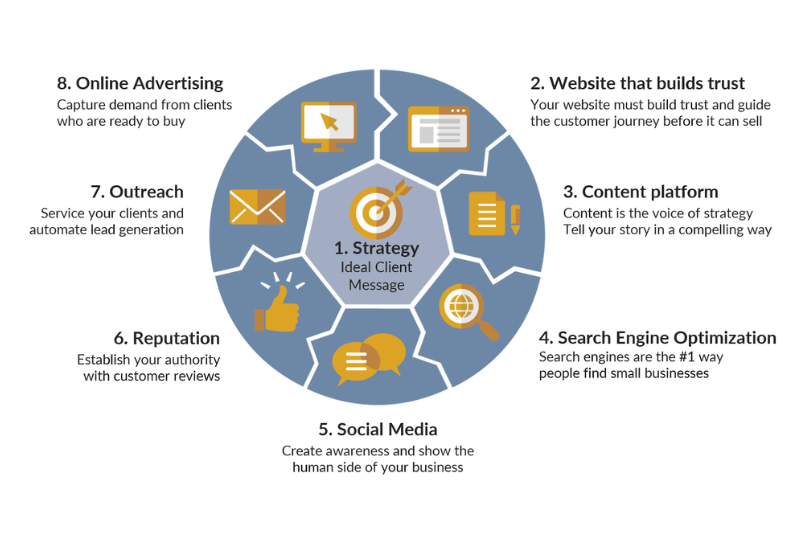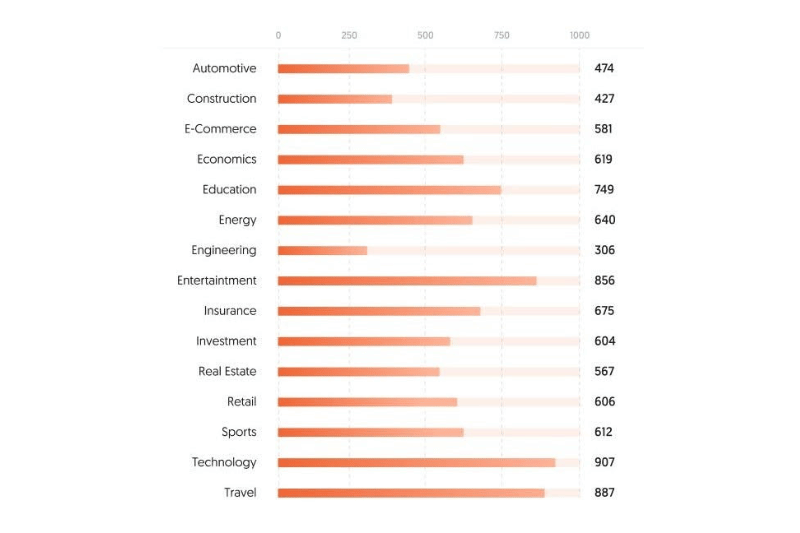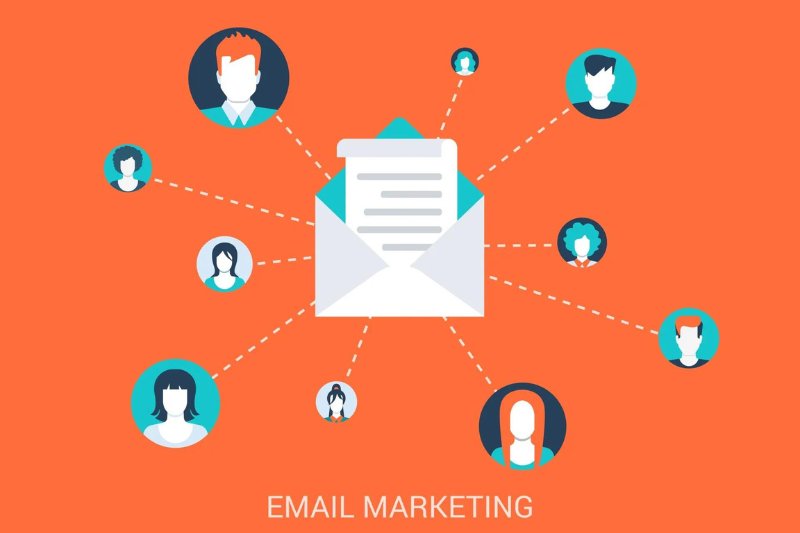AI for B2B Service Companies: Why It’s Time to Build Your Own Brand Bot

From AI Experiments to Strategic Advantage
AI in B2B marketing is rapidly moving from trend to necessity. For most B2B service companies, artificial intelligence is still at best a background tool: individual employees use ChatGPT to help with emails, proposal outlines, or content drafts. Your staff may see improved productivity from these new AI tools, but there rarely is a broader strategy on their use.
When team members experiment independently, valuable insight don’t make it back to the marketing team or sales team. Best practices are lost in private notes, and one-off wins don’t become standard processes. Over the course of a year, that adds up: organizations hoping for a cost reduction find themselves reinventing approaches from scratch.
With these patterns emerging across the industry, it becomes clear that leaders need more than small AI wins to compete in today’s market with true efficiency and personalization. They need a unified approach that secures data, supports marketers and sales teams, and empowers users to share what works and build better workflows.
Why Casual AI Adoption Fails to Deliver Consistent Results
It’s tempting to allow teams to pick their favorite AI tools and see what sticks. But when AI adoption stays casual and uncoordinated, the process can actually slow innovation and diminish results for marketers, salespeople, and the entire organization.
Inconsistent Brand Voice and Fragmented Messaging
Without oversight, marketers and other users create content and campaigns in silos. Emails and assets diverge, making it difficult for prospects to trust your promise or for the sales team to qualify leads with confidence. True personalization—essential in modern marketing—is almost impossible to maintain this way.
Lost Know-How and Missed Opportunities
Even when the marketing team or b2b marketers hit on a winning approach, it often vanishes with role changes or employee turnover. A smart use case for automating a nurture sequence or delivering personalized sales proposals gets buried; the next marketer or sales leader must start from zero.
Security, Compliance, and Data Risks
Public ai tools or generic genai output mean that data, including customer information and market research, may end up stored outside your platform. Analytics, compliance, and security lose accuracy and control, putting hard-won trust at risk.
No Way to Measure, Improve, or Scale What’s Working
Individual improvements don’t scale because there’s no company-wide system for monitoring analytics, lead quality, conversions, or effective marketing activities. Leadership can’t gauge which activities are producing results or make investment decisions with clear, predictive analytics.
The Cost of Friction and Waste
Marketers waste time re-learning or duplicating content creation. Sales teams can’t access the latest successful messaging, so quality and efficiency decline. Activities that might free people for valuable innovation instead end up draining the organization’s productivity.
For B2B marketing to truly mature, the focus must shift from isolated tools to company-wide strategies and automation that drive efficiency, reliable data, and higher revenue.
Brand Bots Explained—AI That Speaks Your Business’s Language
A Brand Bot is the evolution of AI in B2B marketing: a solution trained on your exact business, not on the "average" of what's available on the internet. This isn’t an algorithm that occasionally drafts a blog post; it’s a platform for marketers, marketing teams, and b2b marketers to activate all your best playbooks — from content creation to sales enablement.
What Makes a Brand Bot Different?
- Built for your business model: From the first activity to the second onboarding conversation, the bot draws on your Idea Client Personas, Brand language, and marketing assets.
- Business-specific algorithms: Rather than basic personalization based on broad industry statistics, the Brand Bot leverages the data, patterns, and sales tactics that have converted real prospects and kept customers loyal.
- Smarter workflows, visible insight: Each interaction—each piece of content or lead touch—feeds predictive analytics capabilities, building deeper efficiency with each cycle.

Core Use Cases
- Instant, brand-approved answers: Whether for a marketer building a campaign, a sales leader supporting a new product, or a field tech prepping for a meeting, the bot supports your team.
- Content creation at scale: Blogs, emails, analytics summaries, and case study drafts are generated in minutes, not days—all matching your standards.
- Sales enablement: Responses to common objections, lead qualification criteria, and high-converting scripts are always up to date for the sales team.
- Data security and compliance: The platform keeps customer data, product launches, and campaign results within your secure environment.
- Continuous learning: Every user, every campaign, and every win refines the system, making your analytics, conversion rates, and innovation more robust over time.
A Practical AI Roadmap: Turning AI Experiments into Lasting Results
Transforming your AI strategy from scattered productivity gains to a true business engine requires deliberate investment, clear goals, and actionable steps. Here’s how B2B marketers and marketing teams can build repeatable success:
1. Assess Your Current AI Landscape
Map out every place AI is in use—whether for prospect research, content creation, sales reports, or predictive analytics. Identify gaps, risks, and the workflows that could benefit most.
2. Clarify Goals and Success Metrics
Set targets like reduced sales cycle time, improved lead quality, or better marketing attribution. Predictive analytics models can help uncover the real drivers for growth and innovation.
3. Implement Company-Wide Policy and Governance
Establish clear guidelines: Who reviews content? Where does data reside? What is the process for updating core assets? This step will protect your brand and foster responsible technology adoption.
4. Build and Prioritize Your Internal Knowledge Bank
Catalog existing assets: ICPs, product/service guides, compliance documentation, and client success stories. These are the foundation for effective personalization, content, and automation.
5. Select Technology and Partners
Evaluate providers to ensure your platform of choice fits your need for analytics, data security, and integration with marketing and sales systems. Consider year-over-year support and ongoing user feedback.
6. Run Focused Pilots and Track Progress
Choose an example use case—such as onboarding new marketing team members or quick-turn proposal writing—and track improvements in efficiency, conversions, or lead volume.
7. Roll Out, Expand, and Communicate Wins
Iterate based on feedback, use analytics to uncover patterns, and keep the team involved. As automation and content creation become routine, marketers and sales leaders will see higher productivity and more consistent results.
8. Review, Refine, and Optimize
Ongoing oversight, platform updates, and transparent data sharing keep your AI systems aligned with business goals and industry changes.
Transform AI from a Quick Fix into a Lasting Advantage
Experimenting with AI tools can show the value of artificial intelligence for marketers and sales teams, but sustainable competitive advantage comes from building an AI-powered brand bot fit for your unique business.
When you move beyond one-at-a-time activities and into systems that unify your workflows and analytics, efficiency goes up, people have more time for high-value work, and innovation becomes the norm. Investments in automation and content consistency deepens loyalty, both with customers and with the teams who drive your business forward.
If you’re ready to see how AI in B2B marketing can deliver measurable results, then now is the time to make your move. Book a Brand Bot demo, access our tailored guide for marketing teams and b2b marketers, or speak with our team about how a platform built on sound data, automation, and proven marketing strategies can transform your results.
Do you have any questions on the above, or would you like to share your experience? Just email ideas@mawazo.ca or call +1 (833) 503-0807.
At Mawazo Marketing we work with owners of B2B companies who want to accelerate their business. We help them with a concrete digital growth plan, a website that saves operational cost, and a digital marketing system that generates leads. For qualifying clients we offer a 5x ROI guarantee: if we don't reach the objective, then we pay back the difference. Book a Free Strategy Session to find out more.












